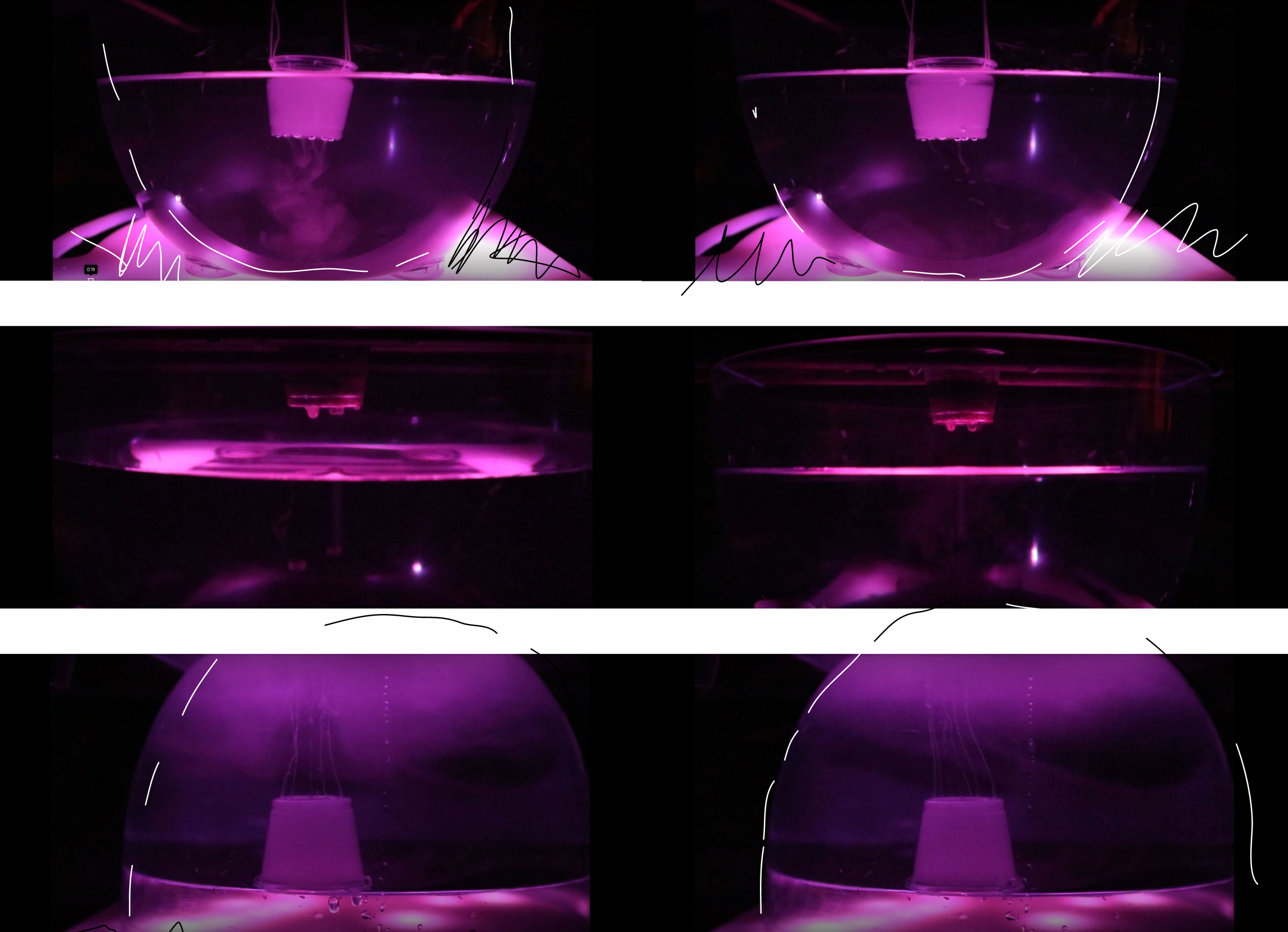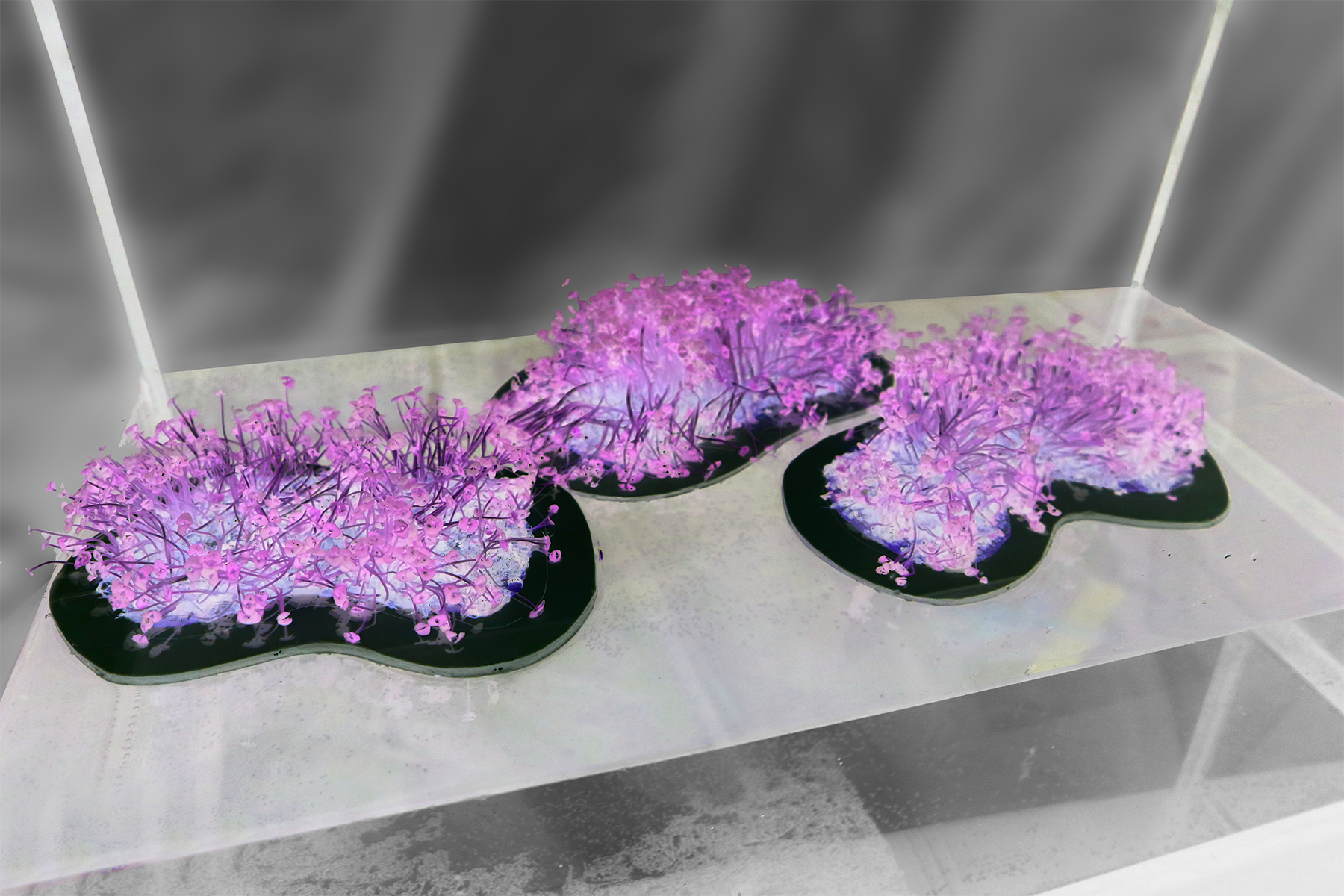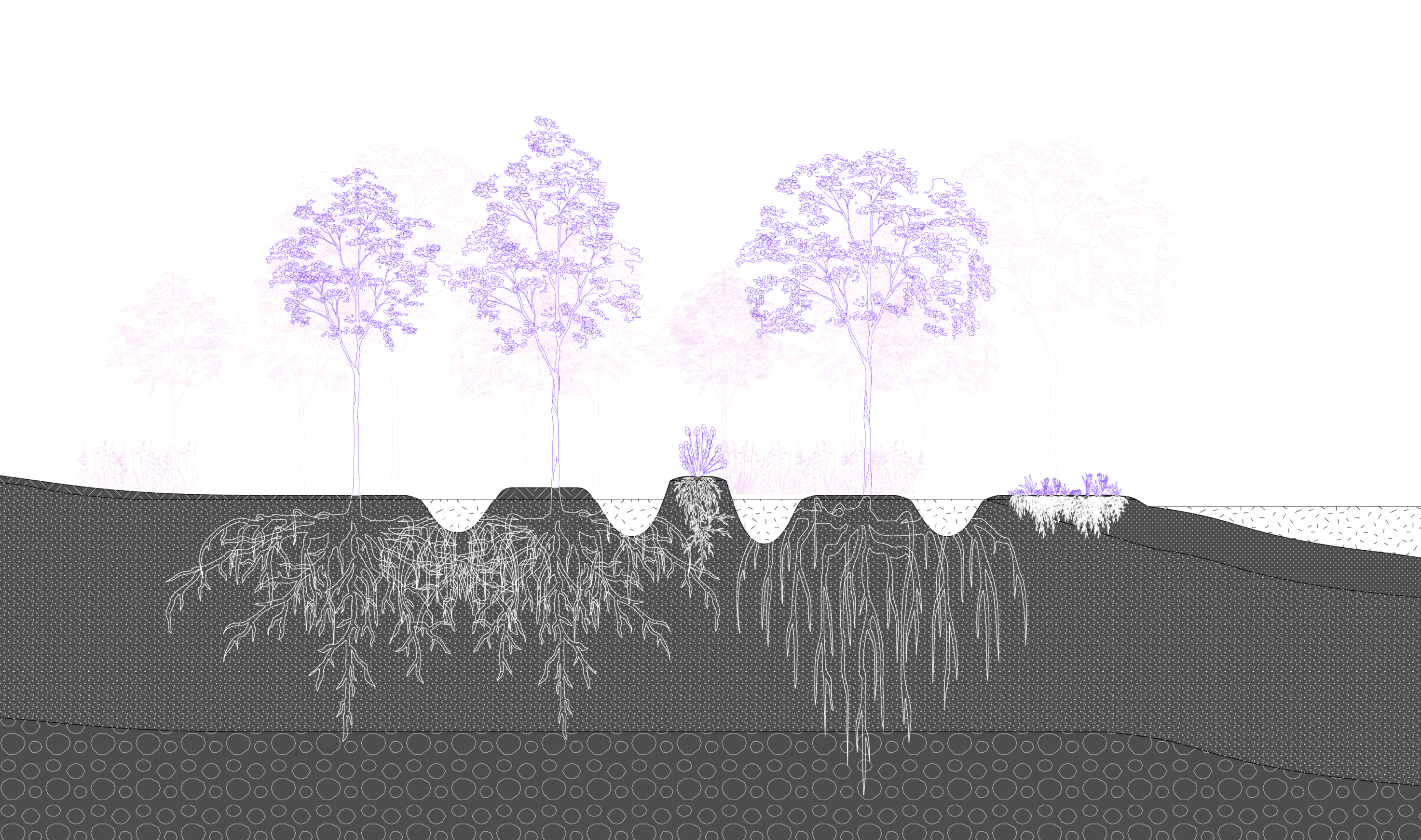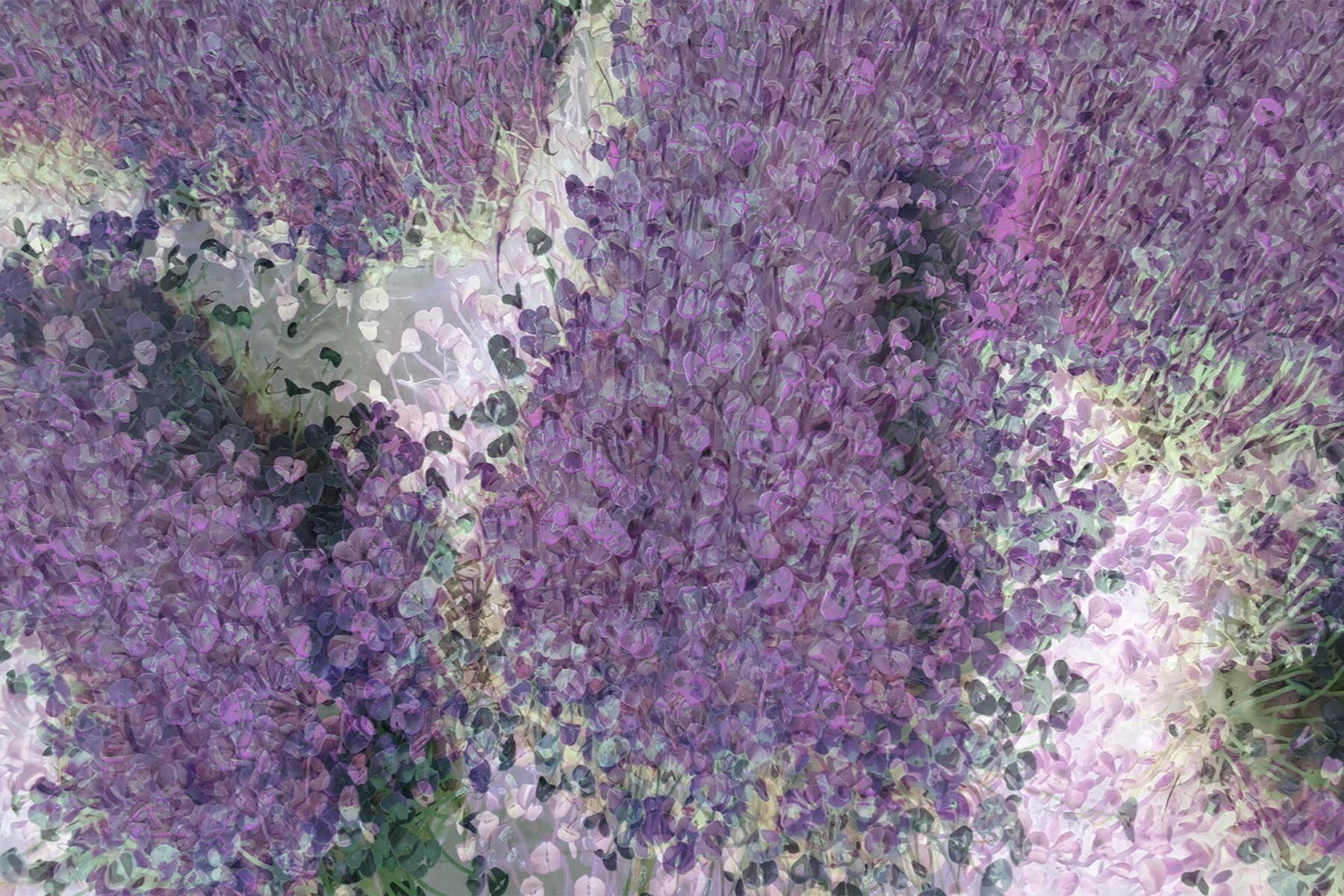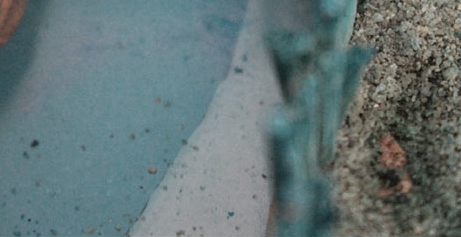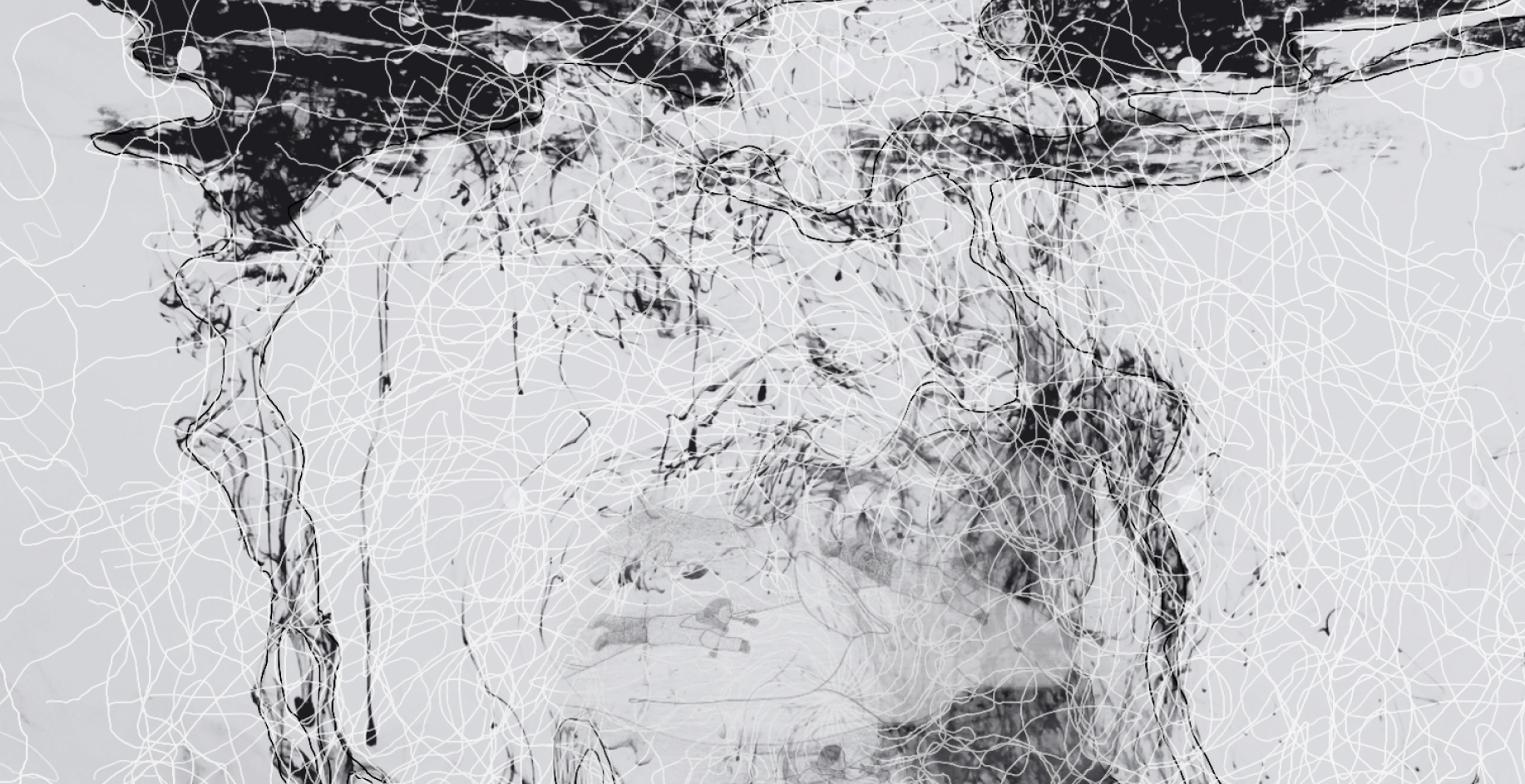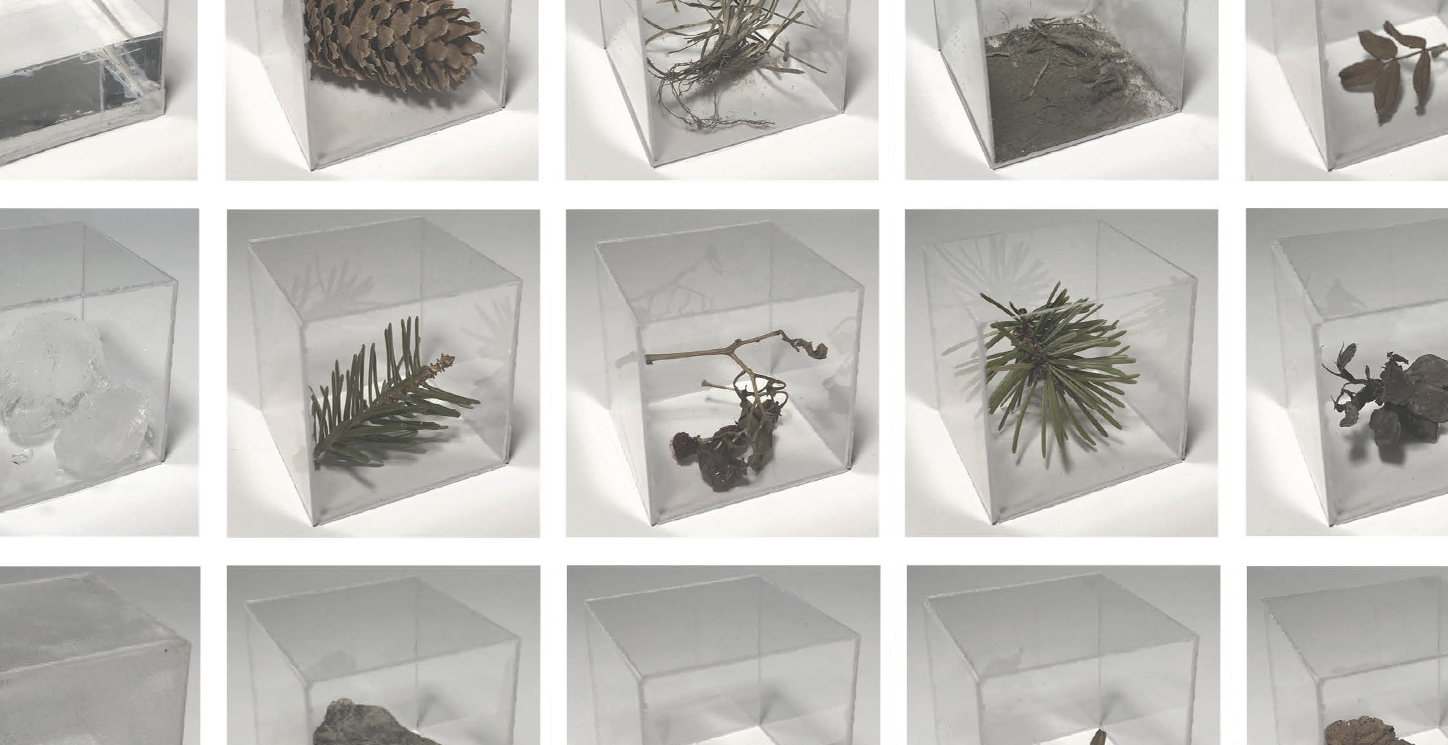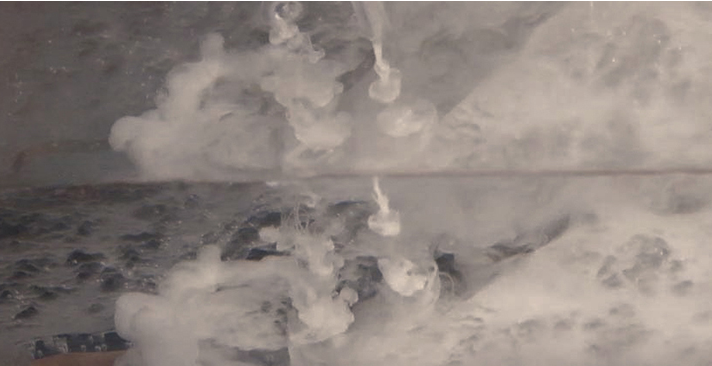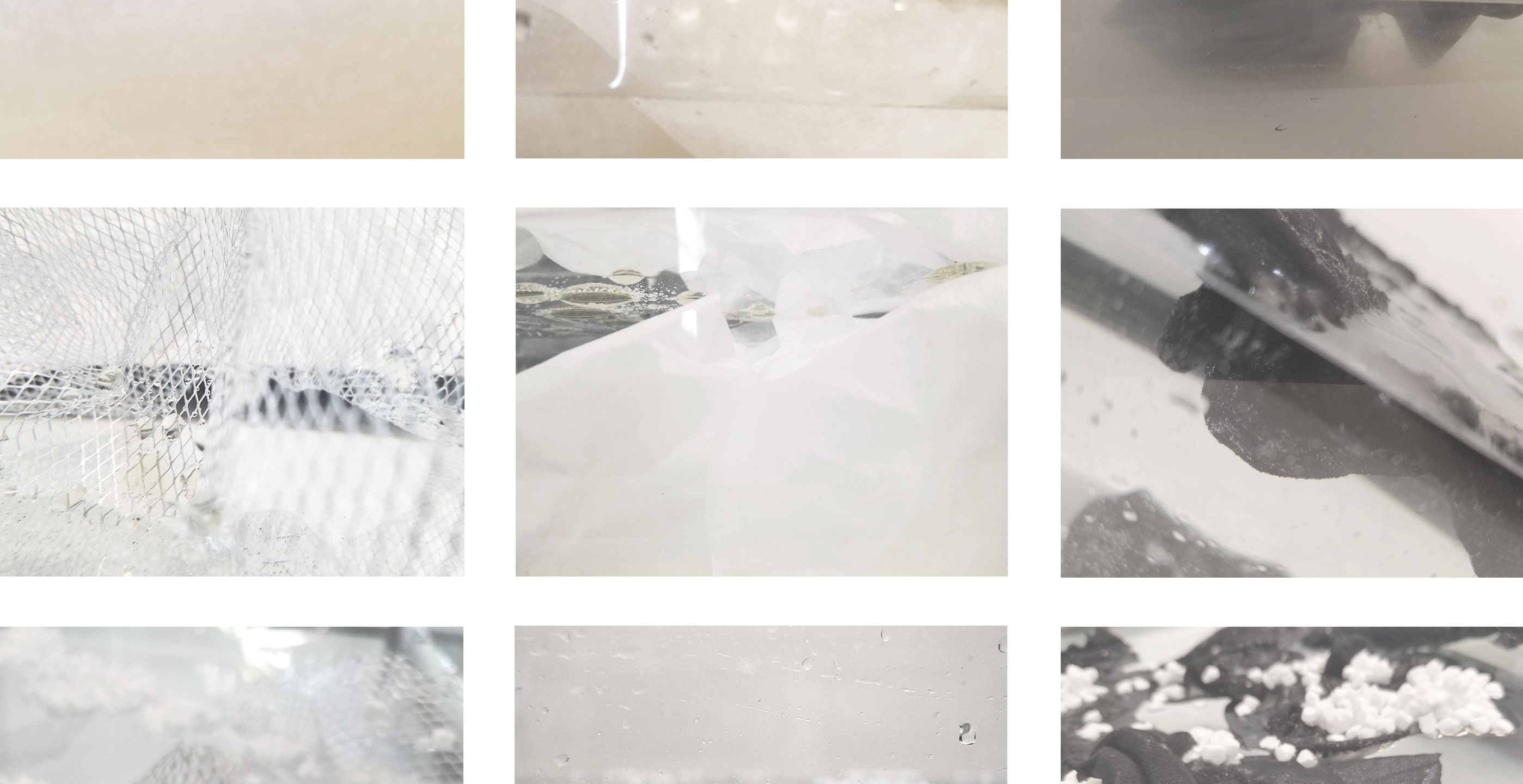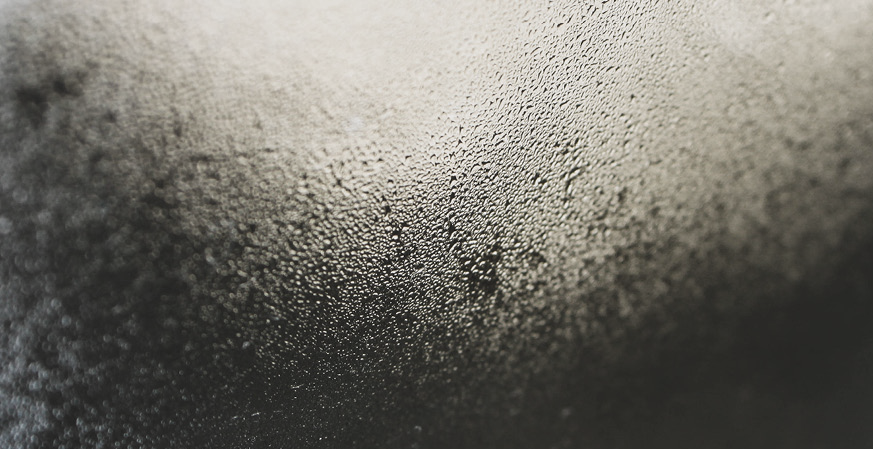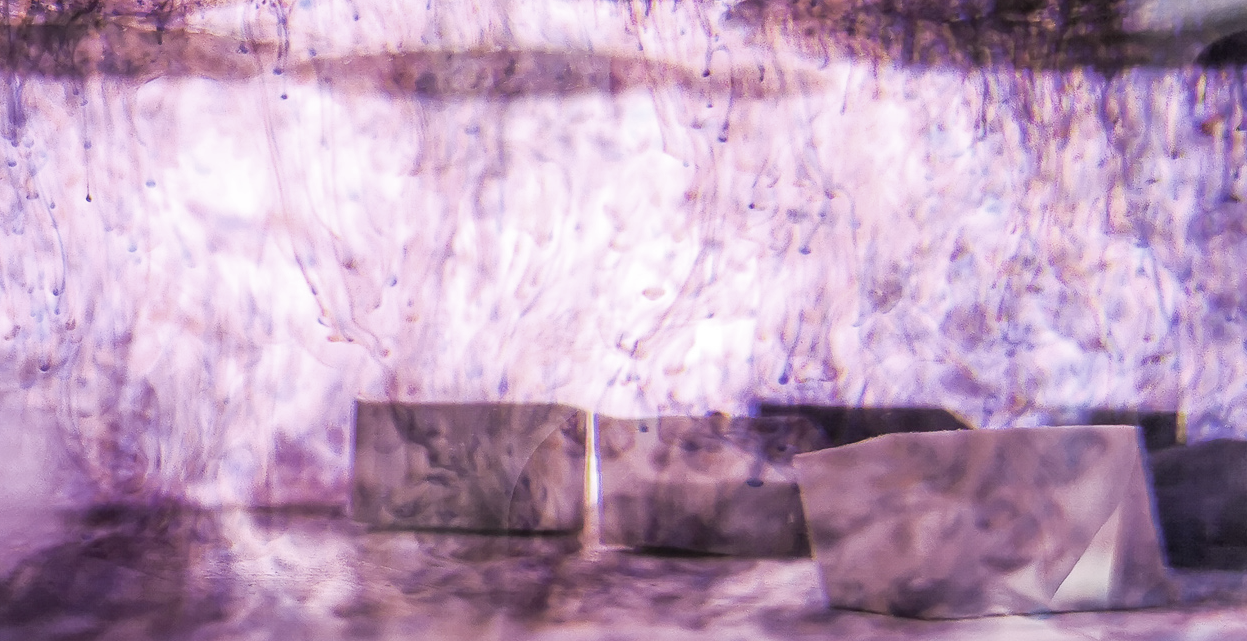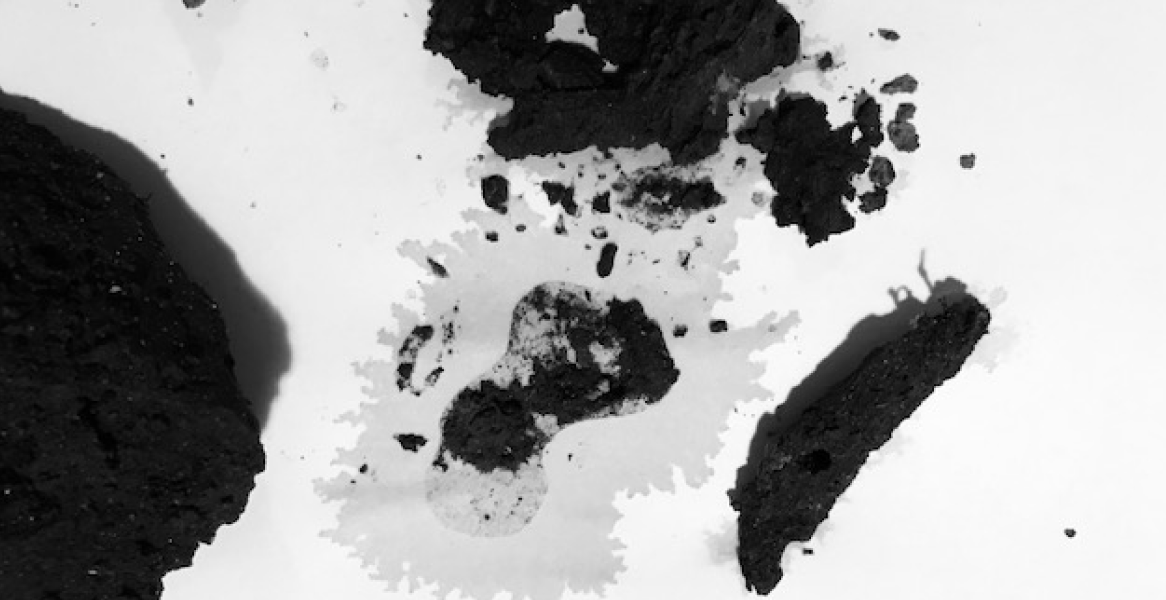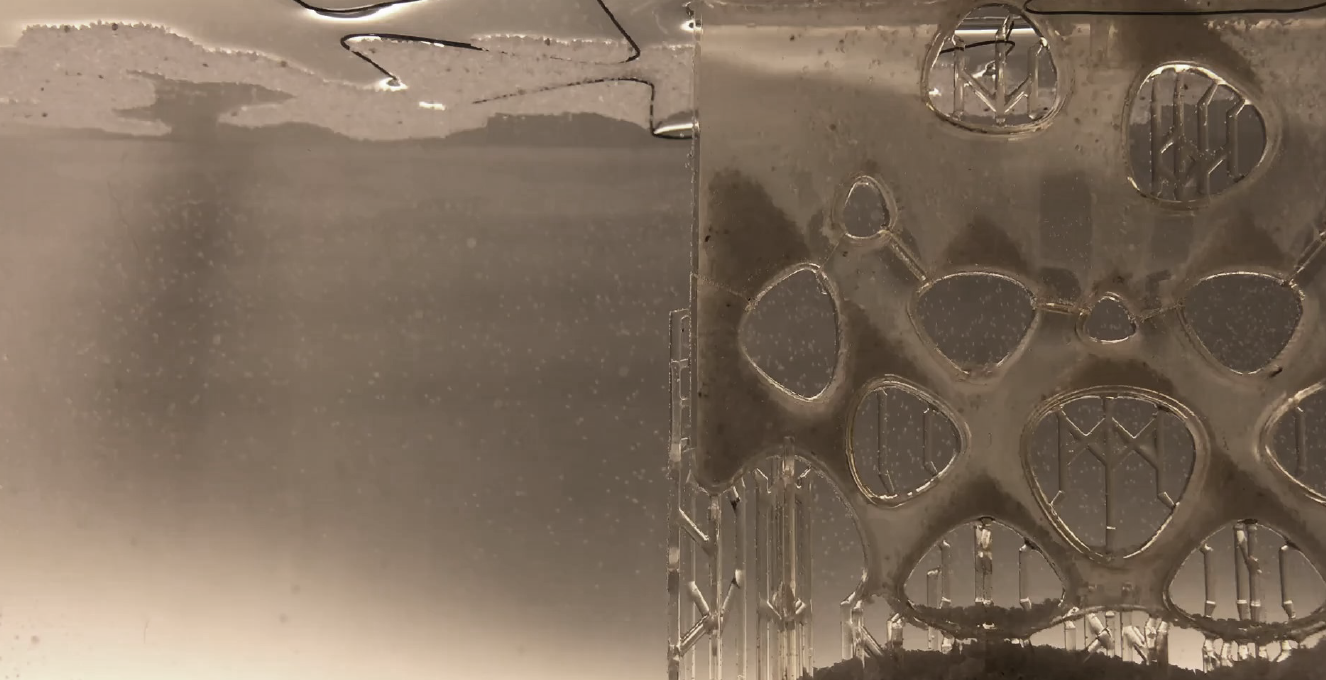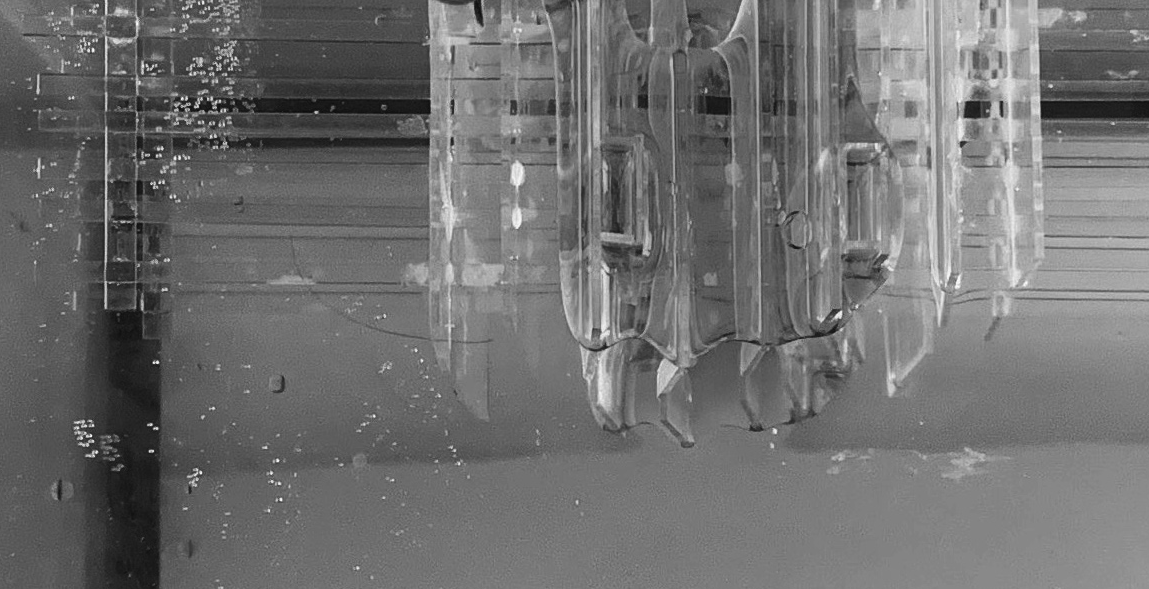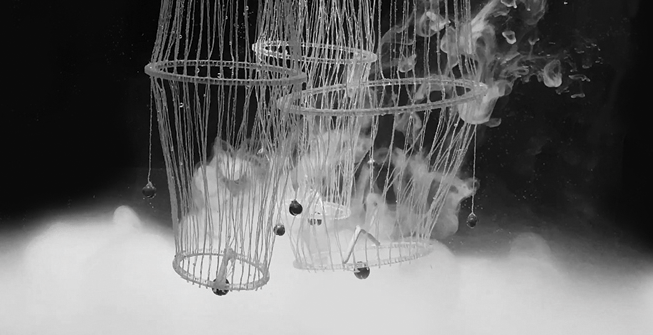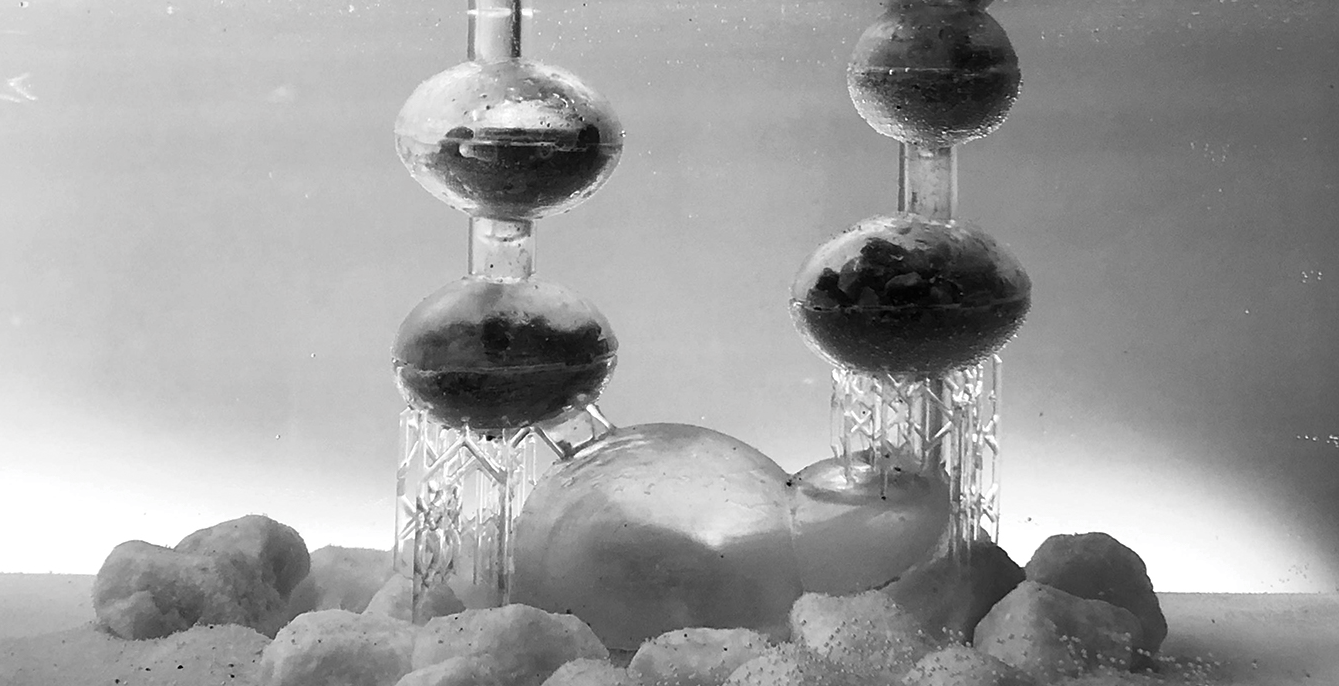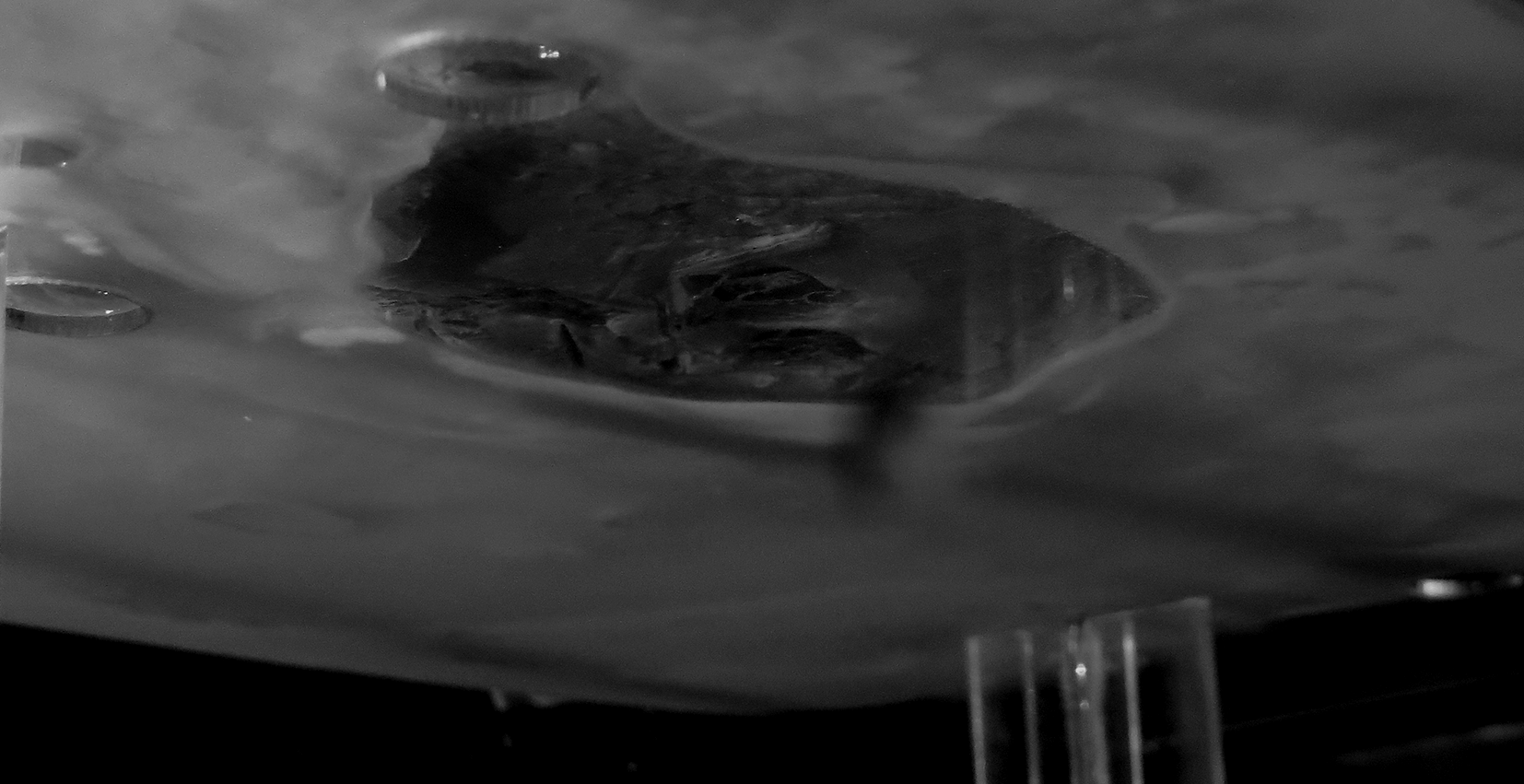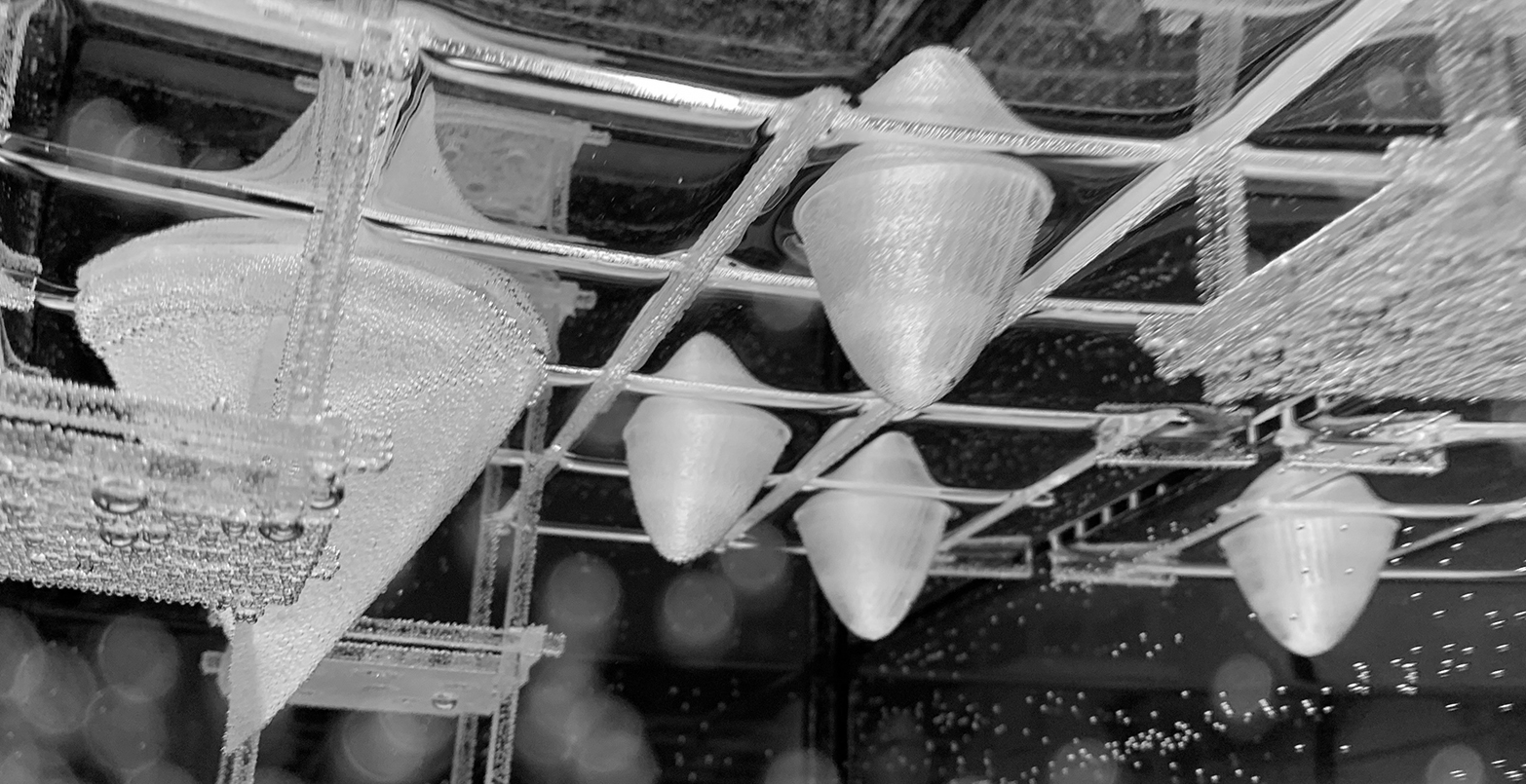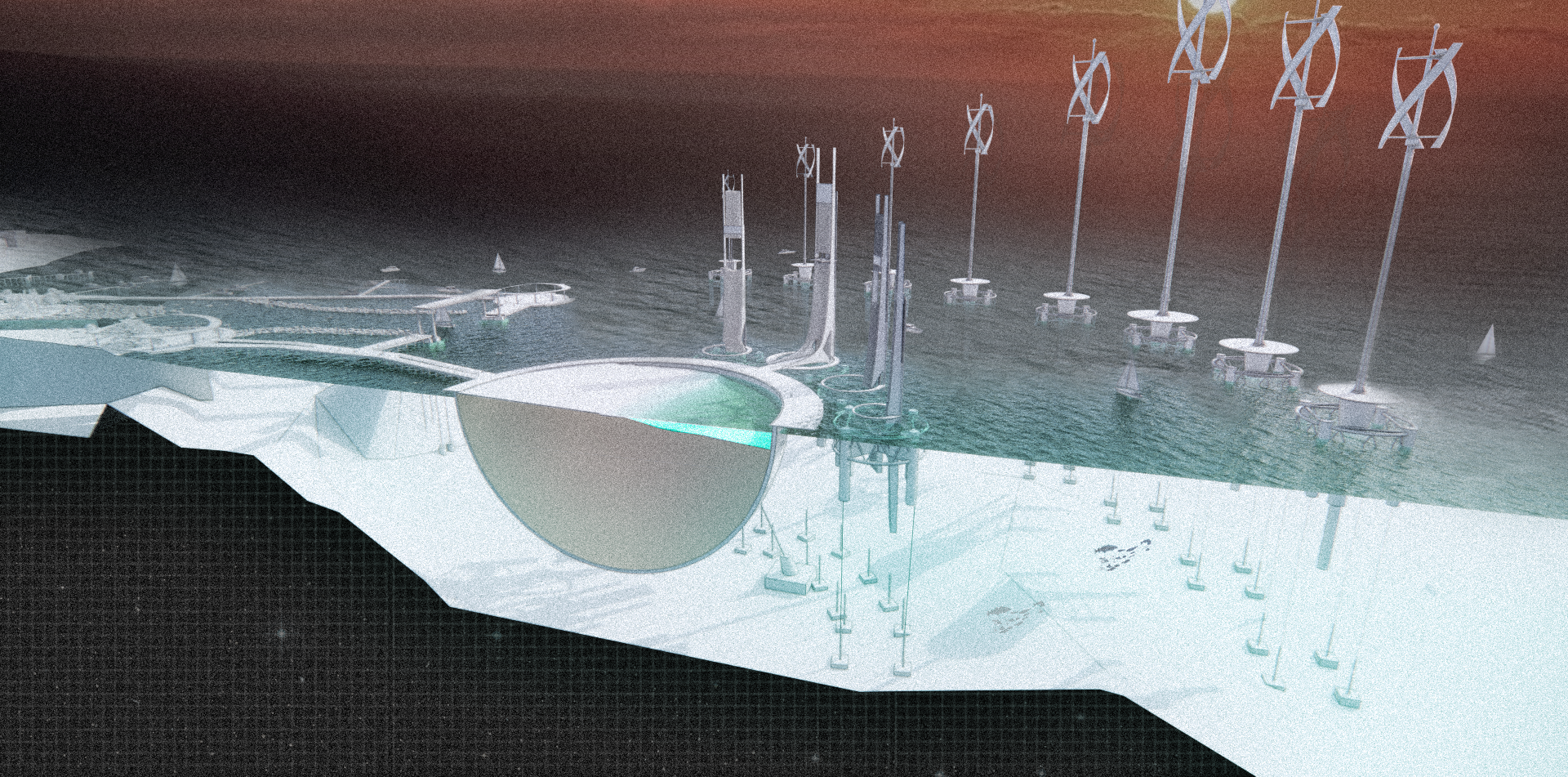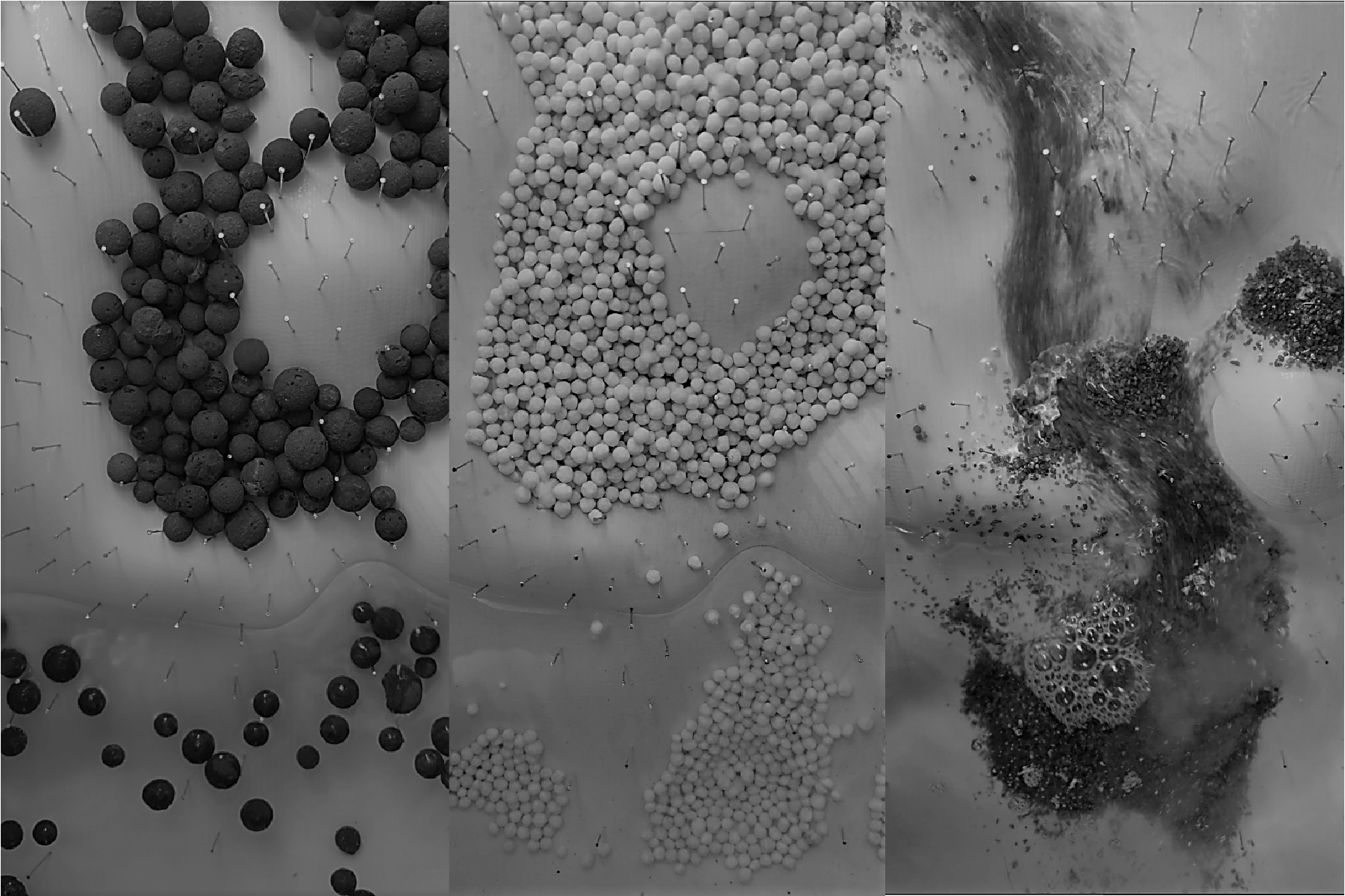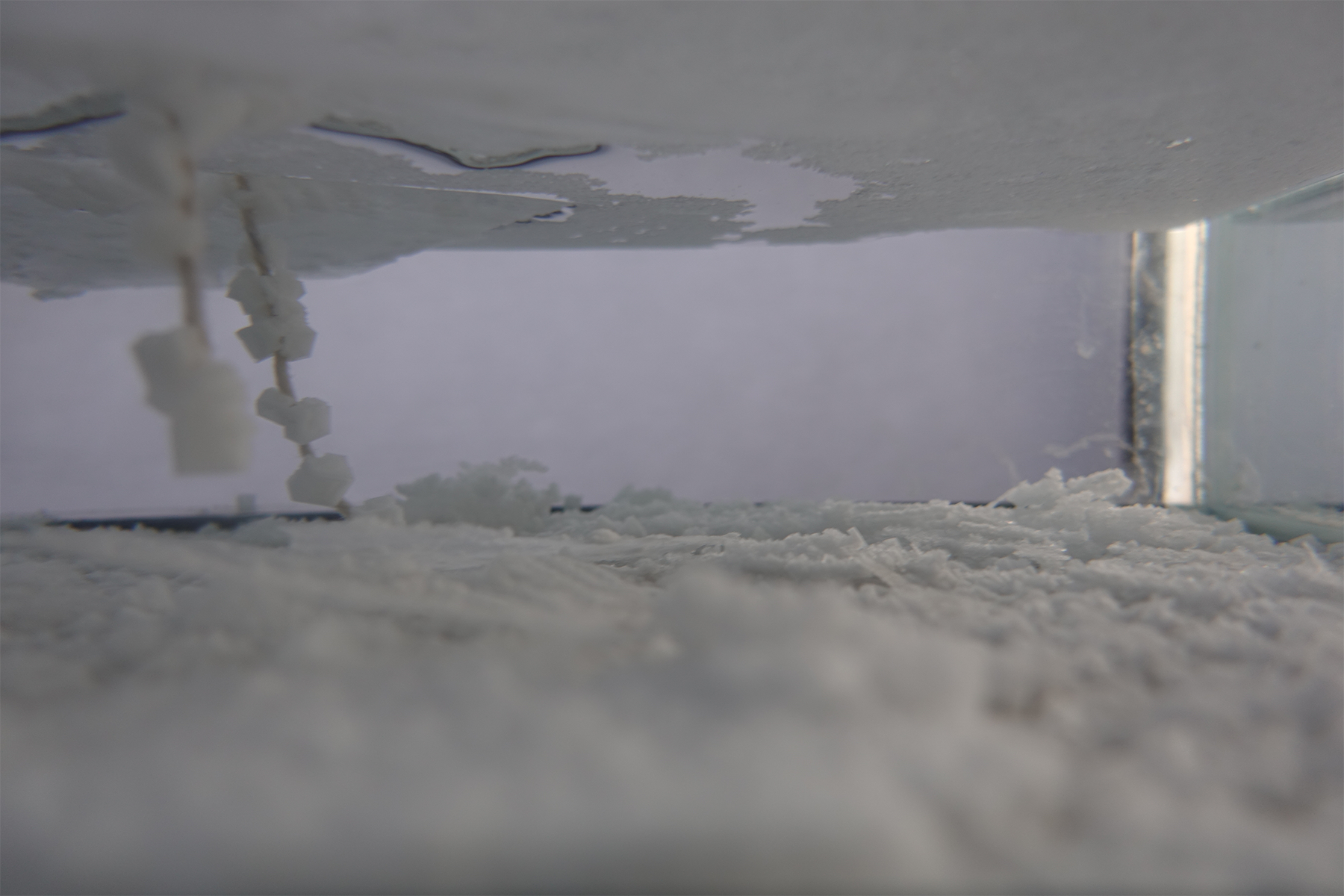Pauline Gahunia, Simran Kaur, Alice Luong
Tank Worlds : Port Hope Harbour
Rewilding: Recovering Port Hopes’ Coastline
The project began by aligning three spaces of contamination in Port Hope—air, land, and water—with model studies that occupy three strata of the tank. The models hovered, floated, and sank, notionally filtering and remediate conditions in their designated strata. These studies focused interest on the effects of low-level radioactive waste in Port Hope and on strategies for remediating the site in a way that is natural and synchronous.
A series of maps of Port Hope explored its reconstruction over time. What was once marsh is now a highly constructed edge, laden with low level radioactive waste. The design proposal suggests returning the site to its original wetland condition. Phytoremediation involves using plants to clean up an area with low to moderate contamination levels through the plant’s natural capacity for filtration. In the proposal, there are three remediation systems at play that all depend on the process of phytoremediation.
First, a series of artificial islands float off the coast, remediating contaminated water and providing a natural habitat for marine species. Reconstructed wetland of tall grasses along the coast both remediate water and ground while also promoting avian and animal wildlife on the site. Second, the central and eastern parts of the site are designed as a series of wetland pools populated with paths to encourage human occupation. Third, a floating greenhouse, docked in the harbour, recycles rainwater throughout the year, grows plants later placed on the site, and maintains and monitors the islands. Together, these interventions propose a gradual rewilding of the site, offering back a safe waterfront space to the community.
